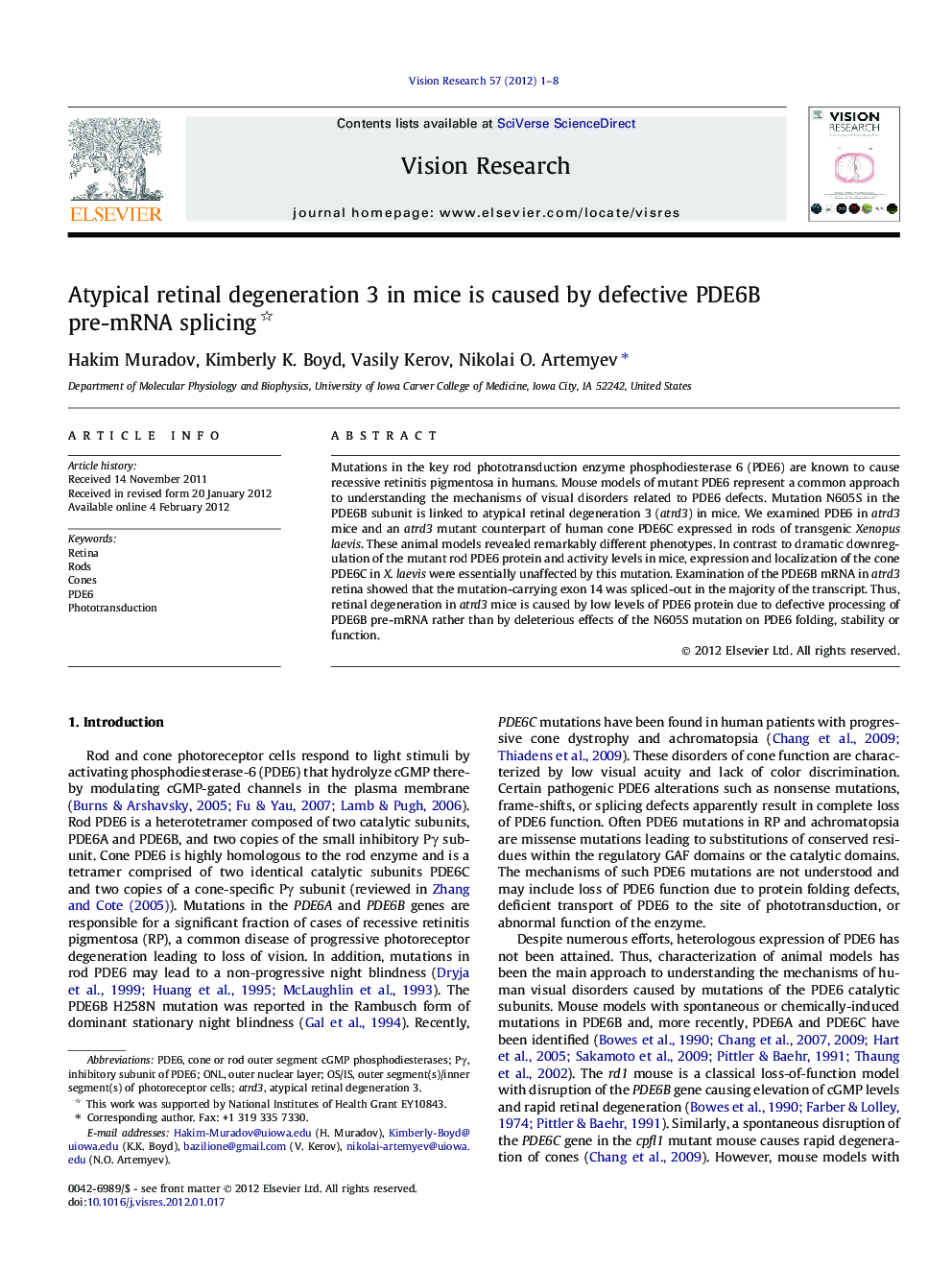| Article ID | Journal | Published Year | Pages | File Type |
|---|---|---|---|---|
| 4034032 | Vision Research | 2012 | 8 Pages |
Mutations in the key rod phototransduction enzyme phosphodiesterase 6 (PDE6) are known to cause recessive retinitis pigmentosa in humans. Mouse models of mutant PDE6 represent a common approach to understanding the mechanisms of visual disorders related to PDE6 defects. Mutation N605S in the PDE6B subunit is linked to atypical retinal degeneration 3 (atrd3) in mice. We examined PDE6 in atrd3 mice and an atrd3 mutant counterpart of human cone PDE6C expressed in rods of transgenic Xenopus laevis. These animal models revealed remarkably different phenotypes. In contrast to dramatic downregulation of the mutant rod PDE6 protein and activity levels in mice, expression and localization of the cone PDE6C in X. laevis were essentially unaffected by this mutation. Examination of the PDE6B mRNA in atrd3 retina showed that the mutation-carrying exon 14 was spliced-out in the majority of the transcript. Thus, retinal degeneration in atrd3 mice is caused by low levels of PDE6 protein due to defective processing of PDE6B pre-mRNA rather than by deleterious effects of the N605S mutation on PDE6 folding, stability or function.
► Rod PDE6 protein and activity levels are markedly downregulated in atrd3 mice. ► The mutation-carrying exon 14 was spliced-out in the atrd3 PDE6B transcript. ► Retinal degeneration in atrd3 mice is caused by defective PDE6B pre-mRNA splicing. ► Missense mutations in PDE6 genes can potentially cause retinitis pigmentosa in humans via aberrant splicing of pre-mRNA.
